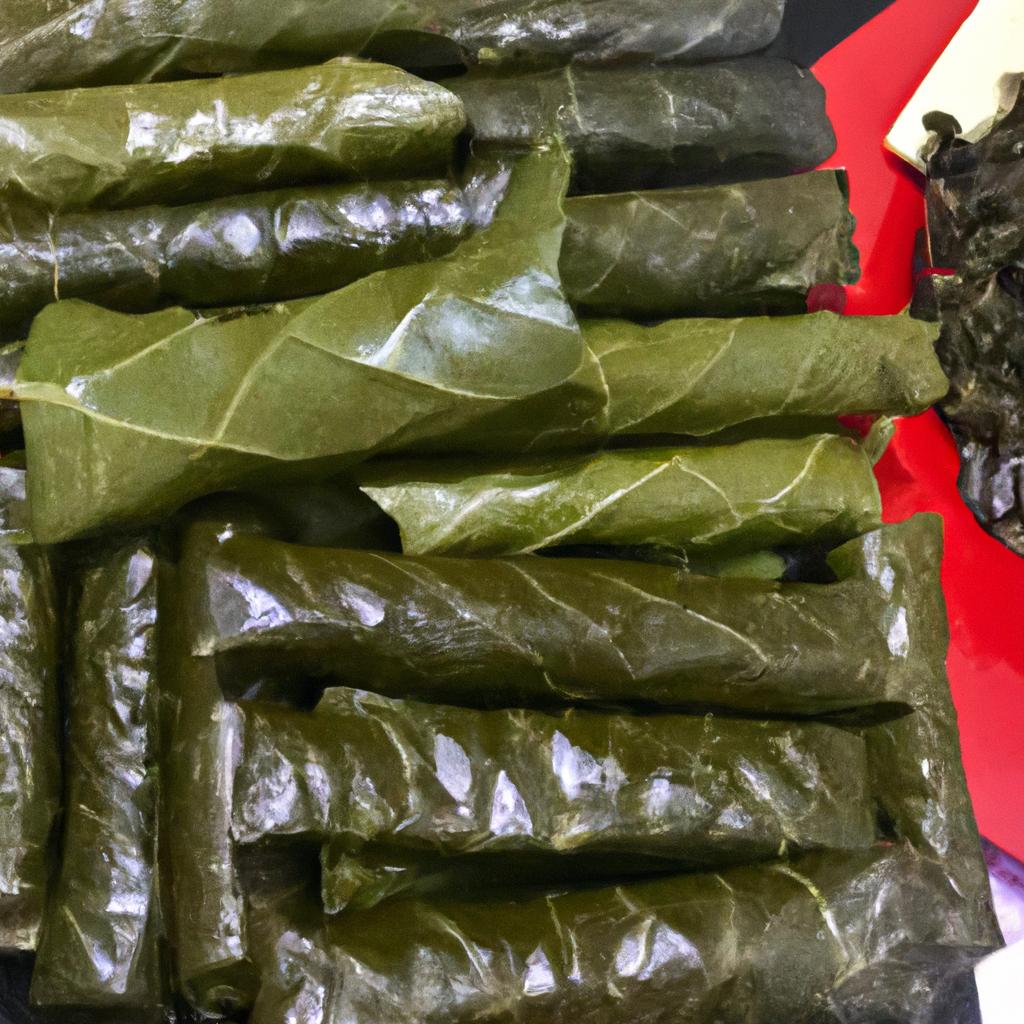Stuffed grape leaves

Lebanese stuffed grape leaves, or warak inab in Arabic, are a classic and beloved dish in Lebanese cuisine. The dish features grape leaves that are stuffed with a flavorful mixture of rice, ground meat, and spices. The grape leaves are then wrapped around the filling and cooked until tender. The dish is often served as an appetizer or as a main course in Lebanon and across the Middle East.
Stuffed grape leaves have been a popular dish in the Middle East for centuries. The origins of the dish can be traced back to the ancient Ottoman Empire, where the dish was prepared as a special delicacy for nobility. Today, stuffed grape leaves are enjoyed by people from all walks of life, and are considered a staple of Lebanese and Middle Eastern cuisine.
One of the unique features of Lebanese stuffed grape leaves is the blend of aromatic spices. Cinnamon, allspice, and nutmeg are commonly used to give the dish a warm, comforting flavor. Additionally, fresh herbs such as parsley and mint are often added to the filling, giving the dish a fresh, herbaceous taste.
Traditionally, ground lamb or beef is used in the filling of Lebanese stuffed grape leaves. However, vegetarian versions of the dish are also popular, with rice and vegetables replacing the meat. The filling is typically a combination of rice and meat, seasoned with fragrant spices and aromatics.
To prepare the dish, fresh grape leaves are washed and blanched in boiling water to soften them. The filling is then prepared and placed onto each leaf, and the leaf is rolled around the filling. The rolls are then arranged in a pot and cooked in a flavorful broth until tender. The broth is typically made with lemon juice, olive oil, and stock, which infuses the grape leaves with a delicate, citrusy flavor.
Lebanese stuffed grape leaves are often served with a tangy, flavorful dipping sauce made from yogurt or tahini. The sauce is typically garnished with herbs and spices, giving it a fresh, bright flavor that complements the rich filling of the grape leaves.
Lebanese stuffed grape leaves are not only popular in their country of origin, but are a beloved dish across the Middle East and North Africa. The dish has been adapted and modified in many different ways, with regional variations incorporating different spices, fillings, and cooking methods.
In addition to being delicious, Lebanese stuffed grape leaves also have nutritional benefits. The dish is high in protein and fiber, and is also a good source of vitamins and minerals. It is a filling and satisfying meal that can be enjoyed as a main course or as an appetizer.
In summary, Lebanese stuffed grape leaves are a classic and beloved dish in Lebanese cuisine, with a rich history and unique flavor profile. The dish features grape leaves that are filled with a flavorful mixture of rice, ground meat, and spices, and cooked until tender. Traditionally served with a tangy dipping sauce, the dish is both delicious and nutritious, making it a great addition to any meal or occasion.
Ingredients:
-1 jar of grape leaves, drained -1 lb ground beef or lamb -1 small onion, finely chopped -1/2 cup uncooked rice -1/3 cup pine nuts -1/3 cup chopped fresh parsley -1/3 cup chopped fresh mint -1 tsp salt -1/2 tsp black pepper -2 tbsp olive oil -2 tbsp lemon juice -2 cups chicken broth
Instructions:
- In a large mixing bowl, combine ground beef or lamb, onion, rice, pine nuts, parsley, mint, salt and pepper.
- Mix well until all ingredients are evenly incorporated.
- Lay grape leaves flat on a work surface.
- Place about 1 tablespoon of the meat mixture in the center of each grape leaf.
- Fold the sides of the grape leaves over the filling and then roll tightly from the bottom up.
- Repeat until all the filling is used up.
- Grease a large pot or Dutch oven with olive oil.
- Arrange the stuffed grape leaves in the pot, seam side down, in a single layer.
- Pour the chicken broth over the stuffed grape leaves, and add lemon juice.
- Place a heavy plate or lid on top of the grape leaves to prevent them from moving while cooking.
- Bring the pot to a boil, then reduce heat to low and simmer for about 50-60 minutes, or until the rice and meat stuffing is fully cooked.
- Remove from heat and let cool slightly before serving. Enjoy!